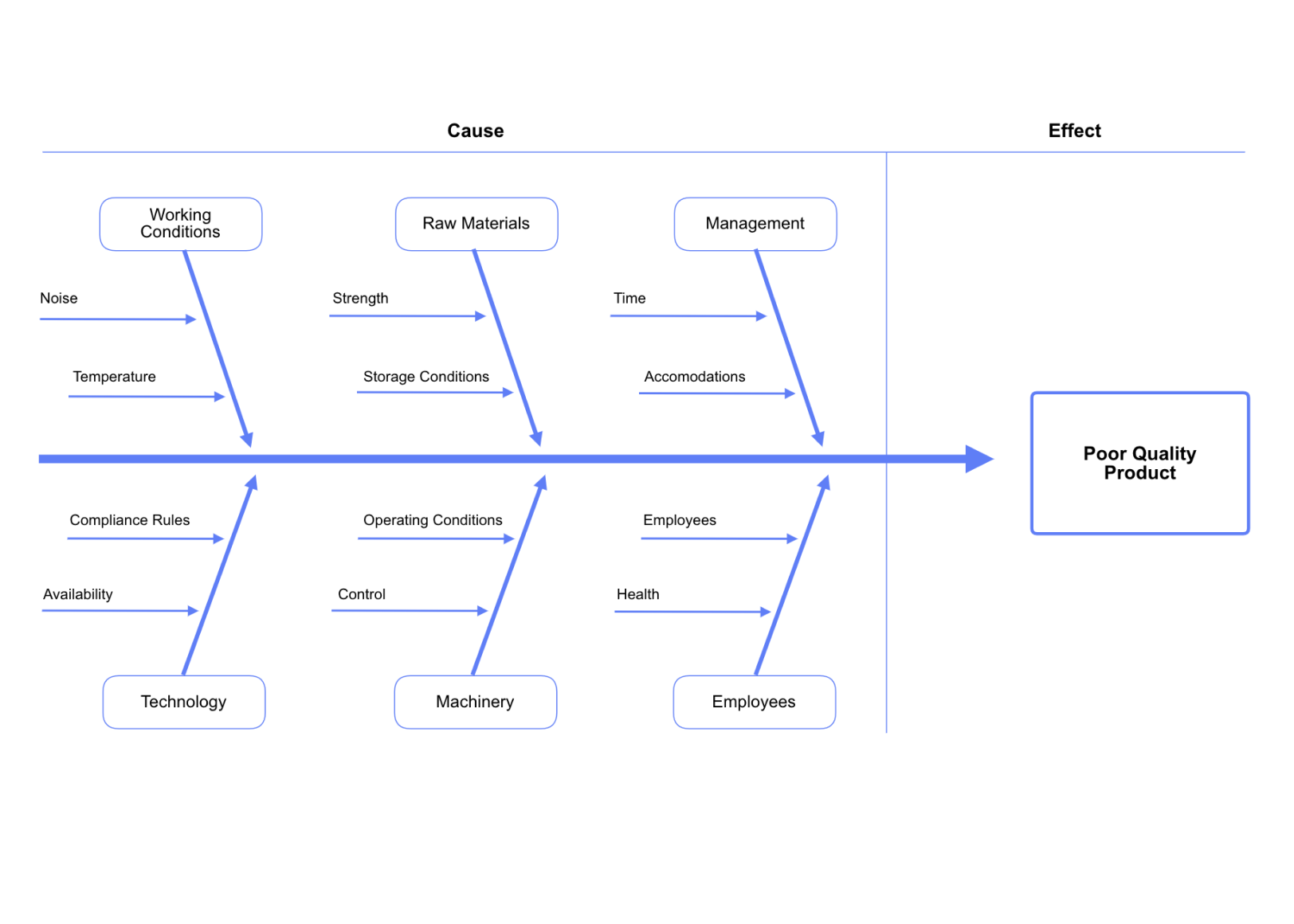Process improvement methods every project manager should know
Georgina Guthrie
February 15, 2022
Everything we do in the workplace consists of processes. That could be booking team lunches, ordering new stationery, or using new tech. Because workplaces constantly evolve and there’s always a need to do better, it’s important to step back and evaluate those processes from time to time to find opportunities for process improvement. The problem is changing things isn’t always easy.
How familiar does this sound? You come up with a great idea. You plan it meticulously, get sign-off from your manager, and implement it. Then, within a matter of weeks, everyone’s doing things the old way. Old habits die hard, and people are naturally resistant to change. Throw organizational bureaucracy into the mix, and, all of a sudden, a small improvement doesn’t seem so straightforward.
Without a structured approach, it’s difficult to keep things moving — or even achieve lift-off in the first place. Here’s how to choose a process improvement methodology, implement it, and, most importantly, ensure it sticks.
What is process improvement?
Business process improvement involves analyzing the effectiveness of existing processes and developing ways to make them more efficient. Examples of process improvement include simplifying a software system, establishing new best-practice standards, or managing demand to improve customer satisfaction.
Generally speaking, process improvement plans focus on one or more of the following areas:
- Efficiency
- Quality
- Completion time
- Resource waste
- Regulatory compliance
- Activity streamlining
Which process improvement methodology should you choose?
The secret to getting the most out of process improvement is to choose a methodology that fits your goals. Each focuses on a slightly different outcome. And no matter which method you choose, you’ll likely adapt it further to suit your situation.
The following questions can help you decide which techniques to use.
- What is the cost-benefit ratio for improving a process? Weigh the cost of conducting an analysis against the benefits of changing the process. For example, it may be necessary to make changes in one department or project category, but the organizational impact is still limited. In this case, it makes sense to use a method that requires less time and resources.
- What is the size of your team? Some methodologies work better as broad organizational models. Others are ideal for individual teams or small businesses.
- Do you need a highly scalable solution? A process improvement model that works well on a large and small scale is valuable for making progressive changes over time.
- What existing methodologies are you using? If you’re already using some elements of Lean management, for example, it may be easy to slowly integrate more.
What you may not know is that diagramming goes hand in hand with process improvement. Many methodologies use a variety of process diagrams to help you visualize complex data, organize your thoughts, and communicate key objectives to other people. Here are the most popular process improvement methodologies to consider.
Kaizen
Kaizen is a process of promoting continuous improvement through small changes in daily work or company culture. It involves all employees — from the newest junior member right up to the CEO. Kaizen focuses on improving quality, productivity, and efficiency through small, measured shifts in how the business operates and teams collaborate.
PDCA Cycle
Also part of the Kaizen methodology, PDCA stands for Plan, Do, Check, and Act. It helps organizations be more efficient when identifying processes that need improvement. First, you define the problem (plan). Then, you create a potential solution (do), test it, and evaluate the data for effectiveness (check). Lastly, you document the final results and implement the plan if it’s successful (act).

5S
Part of the Kaizen and Lean methodologies, 5S stands for Sort, Set in order, Shine, Standardize, and Sustain. The ultimate goal of 5S is to promote workplace organization and efficiency.

Six Sigma
Six Sigma involves employees working their way up through various ‘karate belt’ levels, with green being the starting point and black being the top level. It has two sub-methodologies: DMAIC for improving existing processes and DMADV for creating new ones.
- DMAIC is an acronym for Define, Measure, Analyze, Improve, and Control. It’s a five-step system aimed at refreshing processes that are currently underperforming.
- DMADV, also known as Design for Six Sigma, stands for Design, Measure, Analyze, Design, and Verify. This is similar to DMAIC, except it’s for processes you haven’t implemented yet. The role of DMAIC is to generate a new method that works.
Handy Six Sigma diagrams to know
- SIPOC analysis: this analysis occurs during the ‘measure’ stage of DMAIC or DMADV. As a process, it helps organizations identify business requirements and then create and implement a process improvement project. SIPOC is a form of swimlane diagram.
- Value stream mapping (VSM): this method helps companies map out customer perceptions of the brand or business. The goal is to pinpoint the value a process or product brings and eliminate waste.
- Fishbone diagram (or cause-and-effect diagram): this tool provides an in-depth analysis of flaws in business operations or product designs. The head of the fishbone diagram represents the main problem, and the branching lines or ‘bones’ represent potential causes.

Total Quality Management (TQM)
TQM requires every employee to work towards improving the supply of products or services. It varies from company to company, but some key features of TQM include the following:
- Customers determine the quality.
- All employees work toward shared goals.
- Quality increases over time.
- Managers define goals, manage performance, and look for new ways to be more effective.
- The Kanban board workflow tool uses visualization (usually a digital ‘board’) to get everyone working together to improve processes. As with many other methodologies, there’s a focus on Lean improvement.
Process Mapping
Process mapping, also known as a process flowchart or functional flowchart, is a workflow visualization tool for mapping the stages of process improvement. As a flowchart, it shows key stats about a workflow from beginning to end.

Balanced Scorecard (BSC)
The Balanced Scorecard is a framework for measuring an organization’s current performance and progress toward specific goals. The BSC model evaluates business operations from four perspectives.
1. Financial perspective
Based on factors such as sales, expenses, and ROI, you can gain a complete picture of the company’s financial health. The next step is to find ways to optimize processes and produce more income while lowering costs and balancing resources.
2. Customers and stakeholder perspectives
Adding value to the business helps to increase customer satisfaction. By understanding what customers want and listening to feedback, businesses can design better products and streamline development.
3. Internal process perspective
The internal perspective refers to the operational health of the business. Focus on measuring efficiency in manufacturing or product development and the quality of output. The goal is to identify bottlenecks or inefficiencies and make plans to overcome them.
4. Learning and growth perspective
The growth perspective considers the business’s overall capacity for advancement. This metric evaluates factors such as company culture, human resource development, technology, and infrastructure. Cultivating existing resources allows the company to seize new opportunities.
BSC provides a high-level overview of business viability, and it uncovers the areas with the most potential for improvement. Because the perspective categories are broad, each organization can determine the exact metrics they want to use. By testing different solutions, you can develop the most effective processes.
How to create a process improvement plan
Once you’ve chosen your methodology, you need to put your plan into action.
1. Choose your process
Write down the steps involved in completing the process, and decide which diagram you plan to use. Ideally, you should use diagramming software for this, rather than paper or whiteboards. If everything’s digital, you can edit, save, and share different diagram versions with the wider team and stakeholders.
2. Refine your process
No process improvement methodology is perfect the first time around. Set some time aside to delve into each step and work out how to fix bottlenecks, delays, or inefficient procedures. Lean process improvement is all about small, iterative steps — and your planning and development should be no different. If you’re struggling to locate the source of a specific issue, use a root cause analysis or fault tree analysis diagram to uncover issues.
3. Revise, reshape, and refresh your process
You’ve located your problems, and you know what to do about them. Now, it’s time to roll out your plan to the broader team. Use this as an opportunity to get everyone on board (strong organizational communication skills are a must here). Share your proposed plans with team members to gather diverse feedback. After all, they may pick up on something you’ve missed.
Involving everyone has the added benefit of boosting collaboration and feelings of transparency. If you’re using (highly recommended) diagramming software, such as Cacoo, take advantage of real-time commenting tools that let team members add their thoughts for all to see.
4. Start resource allocation
After talking with your team, you should know how long they need for each task and the necessary resources for completing the job. This step may also involve budgeting, adjusting inventory, hiring consultants, acquiring new software, updating arrangements with supplies — whatever resources you need to move forward.
At this point, it’s time for the project manager to start bringing this all together. Consult managers and employees in different departments to get a full picture — not to mention to get them on your side if there are processes and regulations you need to address before things start moving. Once you have a solid resource allocation plan, share this information with everyone involved.
5. Create and share your implementation plan
Your plan should be clear and straightforward. Avoid jargon, obscure acronyms, and inconsistent formatting. In short, do everything you can to make sure as many people as possible can understand it.
Include the names of everyone involved. Then, list all the steps and tasks in your plan, including a timeline defining the start and end of each task. The more time you spend on this, the clearer it’ll be for everyone. And as an added bonus, your co-workers will be more likely to follow it.
Again, clear communication is a must. Explain your purpose for doing everything, and allow people to give feedback and ask questions — not just now, but during project kick-off as well.
7. Monitor and improve continually
In the spirit of Kaizen, process improvement should not be considered a one-off event. To have the best chance of success, you’ll need to check in regularly to make sure everyone is following the new steps.
Address issues like bottlenecks and failures, and amend the plan as you go. After every improvement, monitor the results to ensure it’s been a success and to make further adjustments if necessary. The more you can collaborate on this, the smoother your process improvement will be.
“This post was originally published on August 7, 2020, and updated most recently on February 15, 2022.


